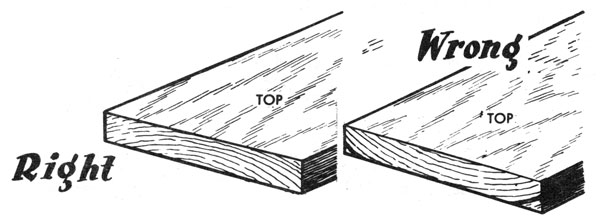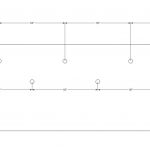We may receive a commission when you use our affiliate links. However, this does not impact our recommendations.
There are two woodworking tools that we have forgotten the most about in the last 50 years: the steel framing square and the handsaw.
The steel framing square is essentially a jobsite calculator, and you can get up to speed on what it can do with one of several books. But handsaws are trickier to master. No one has written the be-all end-all book about using this simple tool.
So we have to gather the tips like breadcrumbs until someone does.
Here’s a fantastic breadcrumb from a 1961 pamphlet from Sears, Roebuck & Co. on handsaws. When crosscutting stock to rough length, always work with the bark side of the board facing you. That will reduce the chance of the board splitting as you finish the cut.
With the heart side of the board facing you, you are much more likely to remove a large jagged splinter from the part of the board you wanted to be perfect.
Note that this applies to rough-cutting boards only. In many cases when you make finish cuts the heart side of the board will face you as you make the cut.
— Christopher Schwarz
Here are some supplies and tools we find essential in our everyday work around the shop. We may receive a commission from sales referred by our links; however, we have carefully selected these products for their usefulness and quality.










I have been told that a board will cup as though the circular grain wants to straighten out. With that in mind, cutting with the bark side up means that any cupping leaves the center high (or low in the saw table) so when you rip cut the board / 2×4 it will fall open relieving any tendency to pinch the saw blade.
With the bark side down, the cupping causes the center to be high on the table saw which would cause the stock to pinch the saw blade.
In a 2×4 the cupping would not be noticeable or cause any significant pinching but to an astute sawyer, a slight pinch is noted.
Anyone have a better idea???
Also note that this tip only makes sense in woods where the radial strength exceeds the tangential strength (e.g., many softwoods, including most construction woods: yellow pine, Douglas-fir, cypress). It doesn’t make sense if the tangential strength is greater (e.g., oak). In many hardwoods, it wouldn’t make much difference.
I guess Sears was targeting the carpentry crowd with this publication.
A reference I find useful was “Extracted from a 1923 edition of Audel’s Carpenters and Builders Guide #1,…” and reprinted by Lee Valley. The entire 4 volume reprint of the 1923 has been an enjoyable and useful read as well. http://www.leevalley.com/US/Wood/page.aspx?p=44935&cat=1,46096,46100&ap=1
The Be-All End-All Book of Handsaws by Lost Art Press????
Chris,
This brings to mind something I have noticed. Each week I cut about 50 SPF 8′ 2x4s into 4′ lengths and rip them in half (why is another post…). I have noticed that if I rip them with the bark side up I get less binding. My working theory is that the natural cupping of the wood pulls the board open at the top of the cut.
Any thoughts?
This may be a dumb question, but why would the heart side of the board need to be facing you for finish cuts?